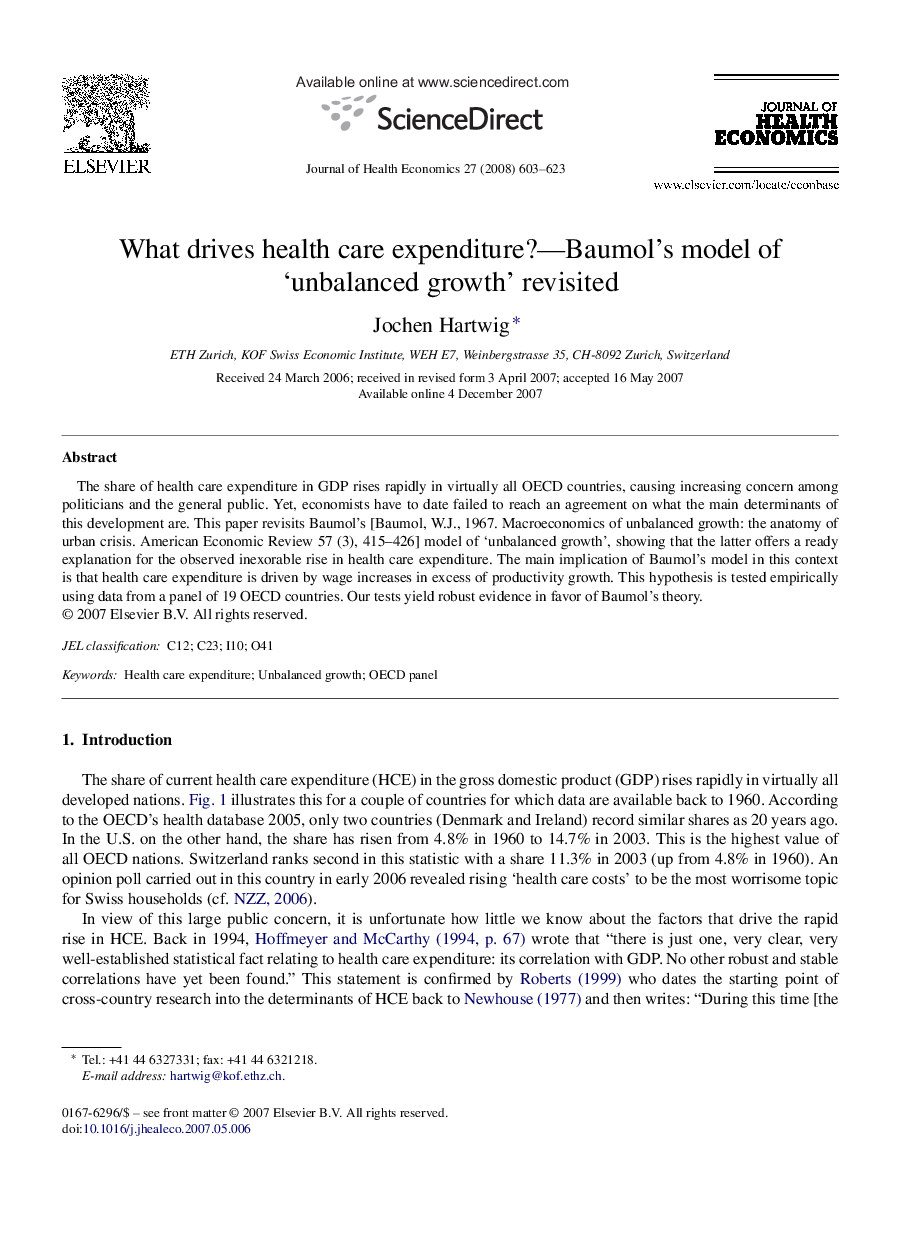| Article ID | Journal | Published Year | Pages | File Type |
|---|---|---|---|---|
| 962097 | Journal of Health Economics | 2008 | 21 Pages |
Abstract
The share of health care expenditure in GDP rises rapidly in virtually all OECD countries, causing increasing concern among politicians and the general public. Yet, economists have to date failed to reach an agreement on what the main determinants of this development are. This paper revisits Baumol's [Baumol, W.J., 1967. Macroeconomics of unbalanced growth: the anatomy of urban crisis. American Economic Review 57 (3), 415-426] model of 'unbalanced growth', showing that the latter offers a ready explanation for the observed inexorable rise in health care expenditure. The main implication of Baumol's model in this context is that health care expenditure is driven by wage increases in excess of productivity growth. This hypothesis is tested empirically using data from a panel of 19 OECD countries. Our tests yield robust evidence in favor of Baumol's theory.
Related Topics
Health Sciences
Medicine and Dentistry
Public Health and Health Policy
Authors
Jochen Hartwig,
